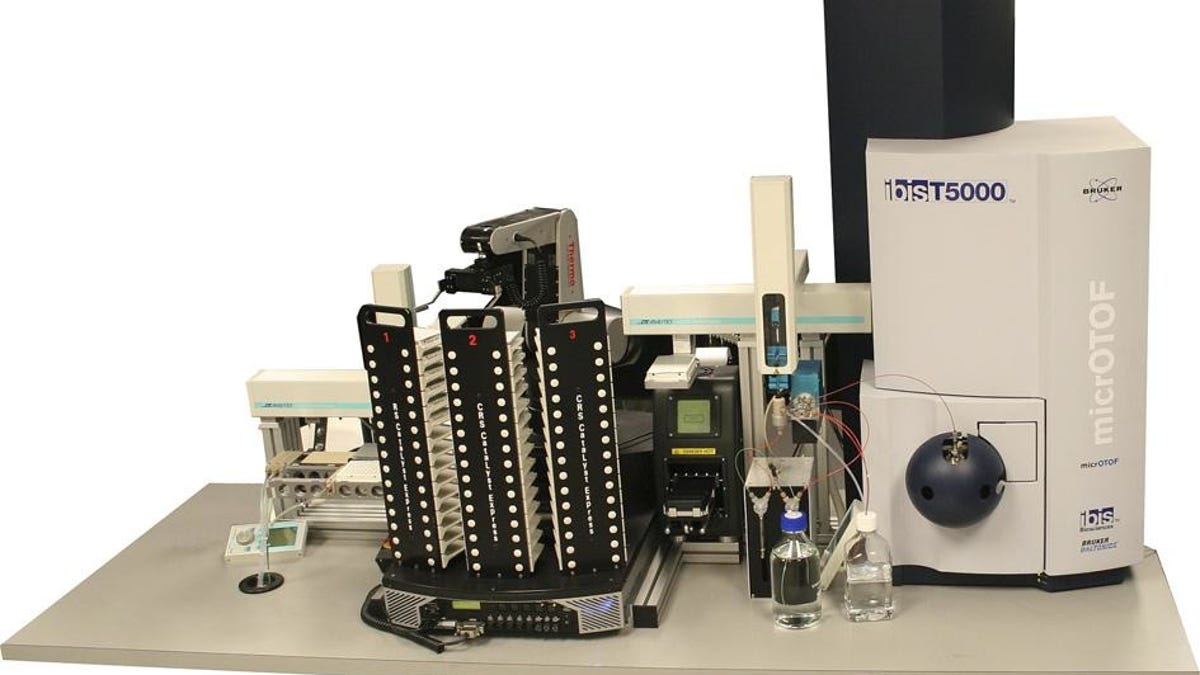Medical tools top WSJ's tech innovation awards
A pathogen sensor and an artificial hand take this year's gold and silver awards, besting a solar-powered base station for cell phones and paper-thin flexible speakers.

For The Wall Street Journal's ninth annual technology innovation awards, editor Michael Totty reviewed nearly 500 entries and, with a team of judges, weighed which of the top 180 were the most groundbreaking and which were most likely to prove useful during economic hardship. The top two awards both went to medical technologies, besting energy-efficient next-generation LEDs and paper-thin flexible speakers. Affordable health tech seems to have impressed the judges as its own sort of innovation.
The gold award went to the Ibis T5000, a sensor developed by Abbott Laboratories and its Ibis Biosciences unit that can quickly detect and identify all pathogens in a given sample. It uses mass spectrometry to determine the genetic markers of the organisms in a sample, culls through an enormous database of genetic signatures, and then applies a mathematical formula to match the analysis with the signatures in the database.
Current methods of finding microbes that cause diseases work well if we know what we are looking for; it's the unknown unknowns, to borrow a Donald Rumsfeld-ism, that are so hard to detect and that the T5000 seemingly can. This spring, it helped the Naval Health Research Center in San Diego identify the first two cases of the H1N1 swine flu in the U.S.
Totty writes: "The equipment promises not only to alert health officials to new disease strains, but also to guard against bioterrorism and enable hospitals to identify antibiotic-resistant bacteria."
Meanwhile, Touch Bionics' i-Limb Hand took the silver award with its bendable fingers and rotating thumb that can grip objects in ways that traditional prosthetics have not been able to do.
Frankly, I was surprised to learn that most prosthetic hands are still made of pincer-like grips with a thumb and single finger, lacking both the function and appearance of a human hand. Apparently the trick in improving prosthetic hands was to develop materials that match the shape and weight of a human hand while still being powerful enough to do what human hands do. The i-Limb uses motors--controlled by a computer chip--that fit in the knuckle to control the fingers.
Totty writes:
With the hand, wearers can grip and turn a key, for instance, or hold a business card using a thumb and index finger. They can also close all the fingers and the thumb around an object, like a drink can or a shopping-bag handle. It's also possible to point with the index finger, which is useful in operating a phone or a cash machine, among other things. The thumb can also be rested next to the rest of the hand, so that it doesn't snag when putting on clothing.
And while the i-Limb comes with the option of a silicone skin covering, Touch Bionics' chief executive says that younger wearers seem to prefer one of two alternatives: a clear skin that reveals the hand's inner workings, or a black metallic covering reminiscent of Darth Vader.
Not that quoting Rumsfeld and Darth Vader in the same article is ever advisable, but it must be said that the force is strong with this one.

